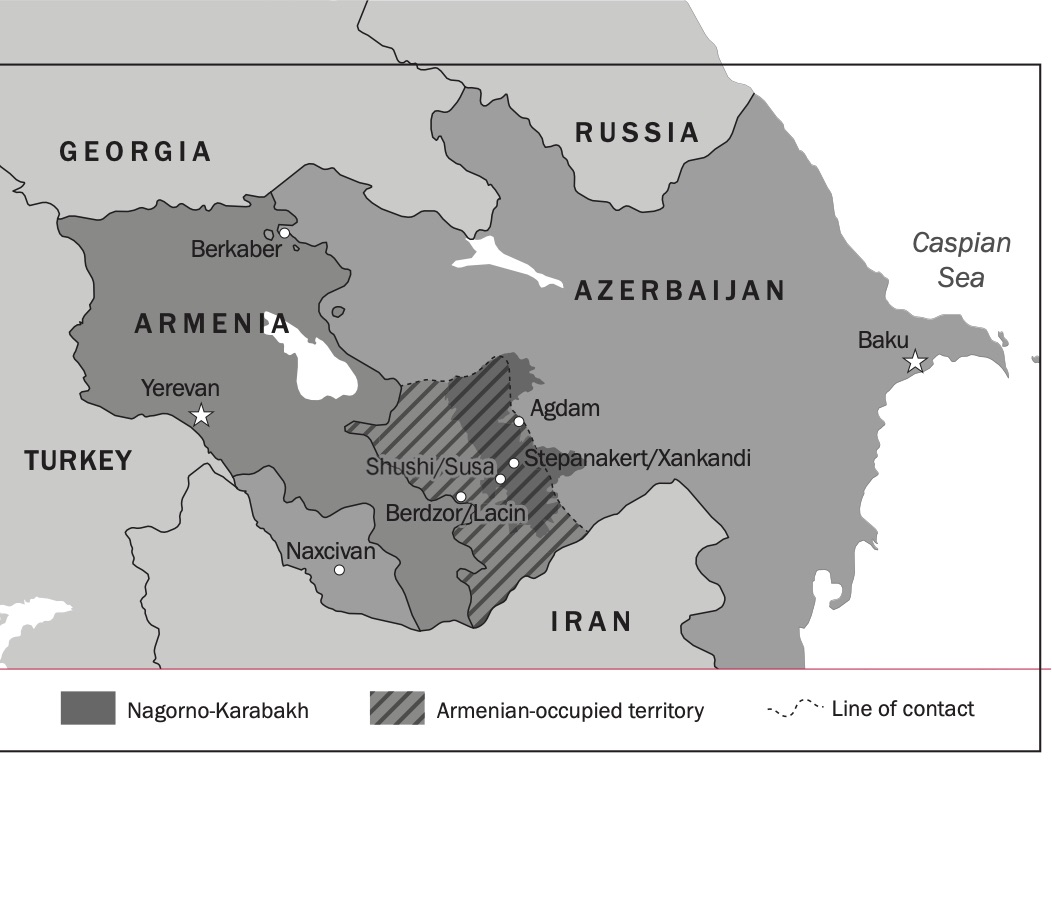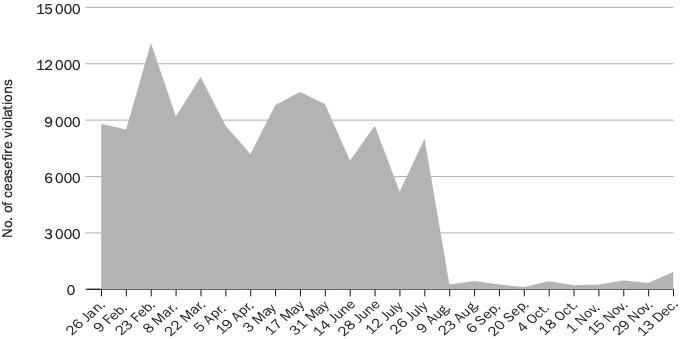5. Armed conflict and peace processes in Europe
Two armed conflicts were active in Europe in 2020: the interstate border conflict between Armenia and Azerbaijan for control of Nagorno-Karabakh, which escalated into a high-intensity conflict during the year, and the ongoing low-intensity internationalized, subnational armed conflict in Ukraine. Elsewhere in Europe, tensions persisted in largely inactive but unresolved conflicts in the post-Soviet space, the Western Balkans and Cyprus. There were also persistent tensions between Russia and large parts of the rest of Europe, over issues as diverse as cyberattacks, Ukraine, the response to Covid-19, and the poisoning of Russian opposition leader Alexei Navalny. In addition, irregular migration and terrorism—linked to serious and complex security challenges in Europe’s southern neighbourhood and beyond—remained important security concerns in 2020.
During the year, three further levels of complexity added to these existing tensions: (a) the outbreak of the Covid-19 pandemic; (b) political protests in Belarus following a disputed presidential election in August 2020; and (c) increased tensions in the eastern Mediterranean that were centred on Greece and Turkey but also involved several other countries. On a more promising note, a modest Kosovo–Serbia détente was mediated by the United States in September 2020.
There were 18 multilateral peace operations active in Europe in 2020—the same number as in the previous year.
Armed conflict between Armenia and Azerbaijan
The six weeks of armed conflict that broke out in 2020 between Armenia and Azerbaijan was the most intense period of fighting since the 1988–94 Nagorno-Karabakh War. Azerbaijan is widely believed to have planned and initiated the offensive, having built up its military capacity over some years. Azerbaijan received military and political support from Turkey and had access to armed unmanned aerial vehicles purchased from Israel and Turkey. These factors appeared to be central to Azerbaijan’s military success in regaining control of about one-third of Nagorno-Karabakh and most of the adjacent territories by the time the fighting subsided. Military and civilian fatalities caused by the fighting were estimated to total around 6700.
A Russian-brokered ceasefire in November 2020 halted the fighting, and at the end of the year Russian peacekeepers were helping the two sides to maintain an uneasy truce. However, several key issues have still to be clarified, including the future status and governance of Nagorno-Karabakh, how to reconcile potentially competing claims of returning internally displaced persons, Turkey’s role in the implementation of the agreement, and the future of the Minsk Process of the Organization for Security and Co-operation in Europe. A new stalemate—but on different terms to the previous 30-year stalemate—now seems likely.
The disputed territory of Nagorno-Karabakh, July 2020

Ukraine
Ukraine has been the focus of Europe’s main territorial conflict since 2014. In 2020 it was again not possible to bridge the fundamental disagreements among the parties about the nature of the conflict and their involvement in it, and the implementation of existing agreements. A new ceasefire agreement in July 2020 led to much lower levels of ceasefire violations in the latter part of the year. However, given that there have been more than 20 previous ceasefire attempts in the six years of conflict, it is difficult to predict whether or how long the ceasefire will remain in effect. There were an estimated 109 conflict-related deaths in 2020 (down from 403 in 2019 and 893 in 2018). Based on the situation in Ukraine at the end of 2020, the indications are that the conflict will probably become another of Europe’s persistent unresolved conflicts.
Ceasefire violations in Ukraine, 13 Jan. to 13 Dec. 2020
